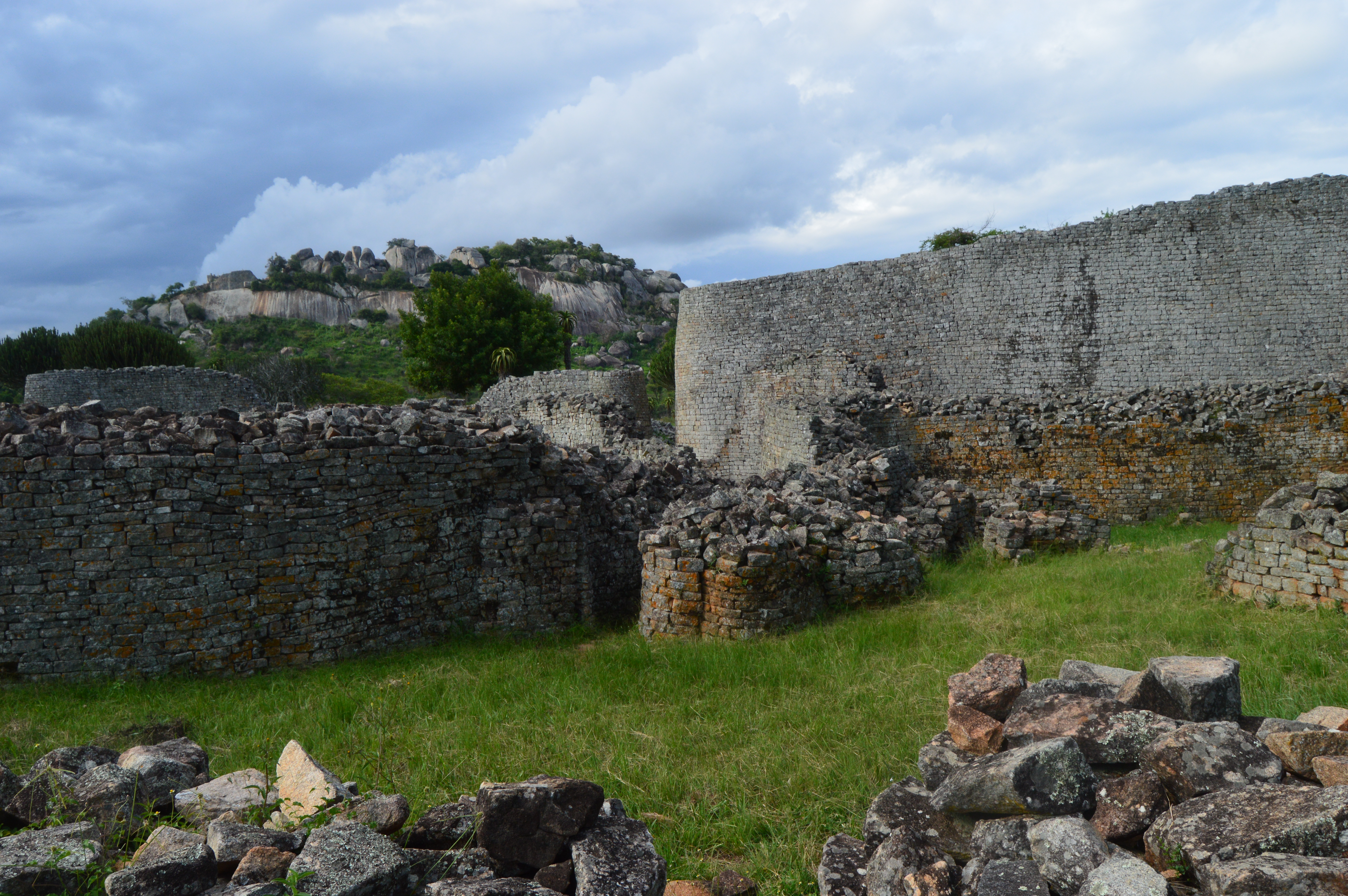The Great Zimbabwean Ruins - the largest sight of ancient ruins in Zimbabwe. It belonged to the Shona people until its abandonment in the mid-sixteenth century. Though initially the tourist is blind sighted by all historically fascinating elements of the site, the theme of gender supremacy becomes blatantly obvious alters perspective of the scene.
The ruins are divided into three sights, the king's palace, the queen's palace and the concubine's quarters. In the photo, the king's palace is in the background towards the left, on top of the mountain. The kings palace is integrated with geographic landmarks. The king's palace is located above the rest, physically and metaphorically. The king, the protector, was considered godly. From his elevated stature he called upon his subjects and women to serve him in his palace.
The queen's palace, the one partially pictured in the foreground, was the king's main wife. She was part of crucial decisions, and the leader among the Shona women. One of her main areas of influence was fertility, which researchers have deducted through the variety of phallic and fertility symbolism throughout the site(not pictured).
The queen ruled over the king's concubines, who lived in a village behind the queen's palace. Researchers estimate near 1000 concubines, who would each visit the king at his disposal. The king referred took these women as wives, not just concubines, and these women were regarded with respect. They built a complete community for women at the foot of the king's palace.
So what does a king do with one thousand wives? The first wife is meant to ensure an heir and provide support for the king, but one person does need one thousand wives... It seems, the king used these unions in order to create a social order.
The king would take one daughter from each household in his kingdom, and provide her with a comfortable life. This "ward-ship" created a forced loyalty among the king's subjects. While a family knew their daughter would be protected, they also remained loyal to the king and his wishes.
This social structure created a clear hierarchy of order within the subjects. This phenomenon is not completely unique to the Shona kingdom as the trading of wards often kept peace among early kingdoms of the time. The practice is still relevant today, though not with usually with family members.
Today, nations send ambassadors to attain temporary residence in another nation, and these representatives speak on behalf of their nation. However, the modern more liberal use of this institution is far more flexible; it does not hold people hostage in their role.
In many ways, our modern institutions are reminiscent of institutions of the past. We build social webs with our peers, we find ways to keep them attached to us by creating social obligation, and thus build relationships. Through the institution of "mass marriage", the king kept his people in order.

Commentary on Rachel Tanur's Works: African Hut 01